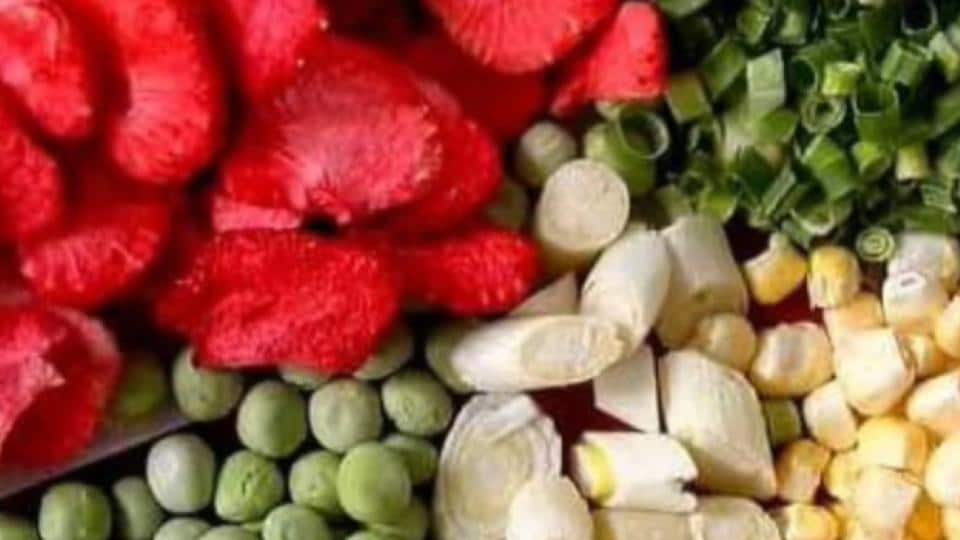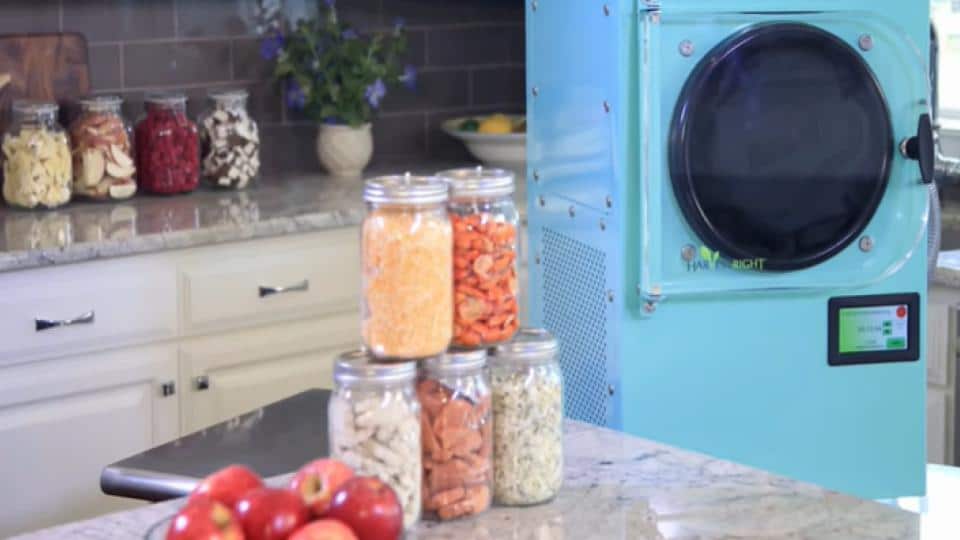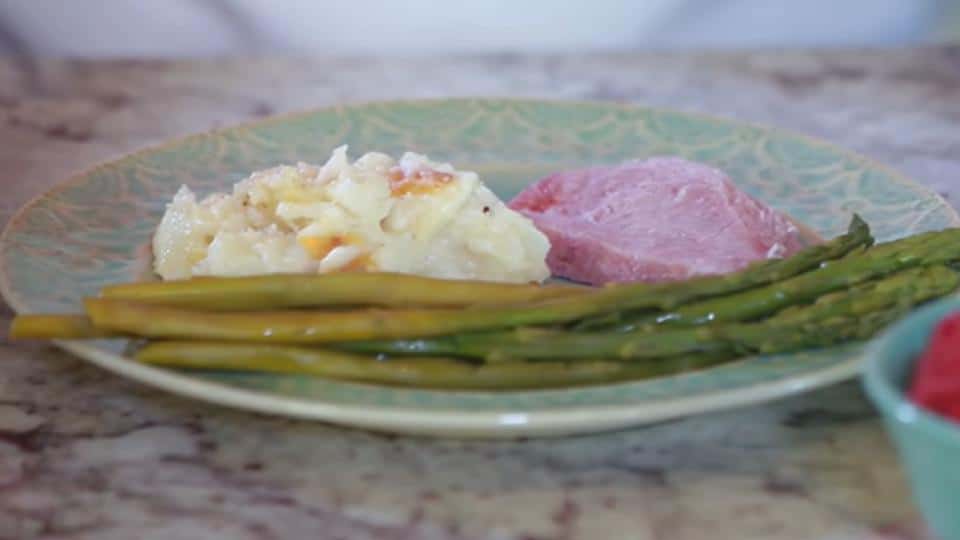Freeze Dry Vs Dehydrated: Which One Is Better?

Table
of
Contents
When
it
comes
to
food
storage
as
part
of
your
plan
for
any
long-term
emergency
and
food
security,
freeze-drying
and
dehydrating
are
two
of
the
top
processes
that
come
to
mind.
But
what
makes
them
different
from
each
other?
Also,
which
one
is
better?
Let’s
take
a
closer
look
at
the
differences
between
freeze
dry
vs
dehydrated
to
see
which
process
you
should
use
for
food
storage.
We’ll
compare
them
in
terms
of
taste,
nutrition,
shelf
life,
and
cost.
Main
Differences
Between
Freeze
Dry
Vs
Dehydrated

-
Freeze-drying
involves
the
use
of
a
large
freezer
through
a
process
that
relies
on
freezing,
primary
drying,
and
secondary
drying,
whereas
dehydrating
food
uses
a
heating
element,
vents,
and
fan. -
Freeze-dried
foods
have
up
to
99%
less
moisture
than
their
original
content,
whereas
dehydrated
foods
only
have
90
to
95%
less
moisture. -
Freeze-drying
retains
most
of
the
food’s
flavor,
making
them
taste
better,
whereas
dehydrating
makes
it
lose
its
natural
flavor. -
Freeze-dried
foods
retain
up
to
97%
of
their
nutrition,
whereas
dehydrated
foods
retain
only
up
to
60%. -
Freeze-dried
foods
retain
their
original
appearance
and
texture,
whereas
dehydrated
foods
are
prone
to
shrinking
and
getting
leathery. -
Freeze-dried
foods
can
last
up
to
25
years,
whereas
dehydrated
foods
can
last
up
to
five
years. -
Freeze-dried
foods
are
expensive,
whereas
dehydrated
foods
are
cheap.
Process

One
of
the
biggest
differences
between
the
two
is
how
you
will
prepare
them.
Both
will
remove
water
from
the
food.
For
freeze-drying,
the
process
is
technically
known
as
lyophilization.
It
is
a
three-step
process,
which
includes
freezing,
sublimation
or
primary
drying,
and
desorption
or
secondary
drying.
Freeze
drying
is
a
food
preservation
process
that
has
been
around
since
1906,
which
was
first
introduced
by
Jacques-Arsene
d’
Arsonval,
a
French
scientist.
It
starts
with
freezing
the
food
at
an
extremely
low
temperature,
which
is
roughly
-40
degrees
Fahrenheit.
It
is
a
rapid
process,
which
prevents
the
formation
of
ice
crystals.
After
freezing,
the
next
is
the
first
drying
phase.
The
food
is
packed
in
a
bag,
the
air
is
vacuumed,
and
heat
is
applied
at
low
pressure.
It
can
take
up
to
a
few
days
and
will
retain
only
roughly
5%
of
the
moisture
in
food.
The
last
process
in
freeze-drying
is
the
water
removal
phase.
It
removes
any
excess
water
that
remains
after
the
initial
stage.
It
is
again
exposed
to
a
high
temperature
at
low
pressure,
which
will
result
in
having
only
1%
of
the
food’s
original
moisture
content.
On
the
other
hand,
food
dehydration
utilizes
a
combination
of
vents,
fans,
and
heating
elements.
They
work
together
to
circulate
air
and
remove
moisture
in
food.
It
starts
with
the
heating
element
increasing
the
temperature
inside
the
dehydrator.
The
fan,
meanwhile,
ensures
even
heat
circulation
for
better
moisture
removal.
Speaking
of
the
process,
it
is
also
worth
noting
that
freeze-drying
removes
up
to
99%
of
moisture
while
dehydrating
removes
only
90
to
95%.
Taste

The
two
also
have
a
significant
difference
when
it
comes
to
taste.
Freeze-dried
foods,
such
as
pineapples
and
peppers,
can
have
more
intense
flavors
compared
to
before
processing.
It
removes
most
of
the
water
and
moisture,
retaining
the
original
flavor
of
the
food.
In
contrast,
many
dehydrated
foods
lose
much
of
their
flavor
during
the
process.
This
means
that
it
will
taste
different
compared
to
its
original
flavor.
The
application
of
heat
can
also
make
it
lose
its
flavor,
which
does
not
happen
in
freeze-drying.
The
taste,
however,
will
also
depend
on
the
food
that
is
processed.
For
instance,
dehydrated
apples,
pears,
and
bananas
can
taste
like
candy
since
the
sugar
is
brought
to
the
surface.
For
freeze-drying,
plums,
apricots,
and
peaches
are
some
of
the
best
options.
Nutrition

If
you
are
conscious
about
the
foods
that
you
eat,
then
you
are
most
probably
concerned
about
the
nutritional
value
of
whatever
you
eat
outdoors.
Freeze-dried
foods
are
healthier
because
they
retain
most
of
their
original
nutrients.
Throughout
the
process,
it
removes
only
water
and
not
the
beneficial
vitamins
and
minerals.
Meanwhile,
dehydrated
foods
use
heat,
which
diminishes
the
nutritional
value
of
the
food.
It
can
result
in
up
to
40%
loss
of
nutritional
value.
By
contrast,
freeze-dried
foods
retain
up
to
97%
of
their
nutrition.
Appearance
and
Texture

The
differences
in
the
process
of
freeze-drying
and
dehydrating
also
result
in
a
significant
difference
in
terms
of
appearance
and
texture.
Freeze
drying
is
a
gentle
process
that
relies
on
low
temperatures.
This
means
that
the
food
will
most
likely
retain
its
original
appearance
and
texture.
It
is
often
crispy
and
airy
when
eaten.
On
the
other
hand,
since
dehydrating
food
requires
a
heating
element,
it
shrivels.
The
longer
it
is
dehydrated,
the
more
it
shrinks.
Hence,
you
can
expect
that
the
appearance
and
texture
will
be
different
from
the
original,
even
its
size.
Not
to
mention,
it
can
also
turn
leathery,
which
will
make
it
hard
to
chew.
Shelf
Life
Freeze-dried
foods
are
known
for
their
longer
shelf
life.
This
is
because
it
removes
most
of
the
liquid
in
the
food,
making
it
less
prone
to
spoilage.
Meanwhile,
dehydrated
foods
retain
a
lot
of
their
moisture
content,
which
is
also
the
reason
for
their
shorter
shelf
life.
On
average,
the
shelf
life
of
dehydrated
foods
is
five
years
and
25
years
for
freeze-dried
foods.
Whether
you
have
freeze
dried
or
dehydrated
foods,
proper
handling
and
storage
will
ensure
long
shelf
life.
Keep
them
in
an
air-tight
container
and
store
them
in
a
cool
and
dark
place.
Exposure
to
external
elements
will
speed
up
its
spoilage.
Cost
On
average,
freeze-dried
foods
are
more
expensive
compared
to
dehydrated
foods.
This
is
because
the
freeze-drying
process
is
more
meticulous,
requiring
more
effort
and
time.
It
requires
20
to
40
hours
to
freeze-dry
foods
in
a
single
batch
but
dehydrating
will
take
only
one
to
36
hours.
As
for
the
equipment,
a
freeze
drier
can
cost
about
$2,700.
Meanwhile,
a
food
dehydrator
can
be
as
cheap
as
$250.
Freeze
Dry
Vs
Dehydrated:
The
Winner
Overall,
freeze-dry
is
better
than
dehydrated.
Freeze
drying
is
a
meticulous
and
expensive
process,
but
it
is
worth
it.
They
retain
most
of
their
original
flavor,
appearance,
and
texture.
Not
to
mention,
it
also
has
a
longer
shelf
life.
